These pretty diagrams of types of high dives performed in the 1912 Olympics in Stockholm are from the official report summarizing the events of the games, published in 1913. (The book has been digitized by the University of Toronto and is available in full on the Internet Archive.)
At the time of this Olympics, diving was a young sport. Its history was rooted in 19th-century Sweden and Germany, where gymnasts experimented with tumbling routines that ended in the water. Swedish divers traveled to Great Britain in the late 1890s and made exhibition dives, which prompted British enthusiasts to found an Amateur Diving Association in 1901. In 1912, which was the first year that women’s diving was included in the Games, Swedish athletes won gold in men’s and women’s 10-meter platform diving, as well as men’s plain high diving.
The handbook summarizes the degree of difficulty for the dives depicted here, with the hardest being the flying somersault forwards and Isander’s dive. (The Isander and Mollberg dives were both named after the Swedish divers who invented them.)
I first saw these diagrams in a post on the Public Domain Review.
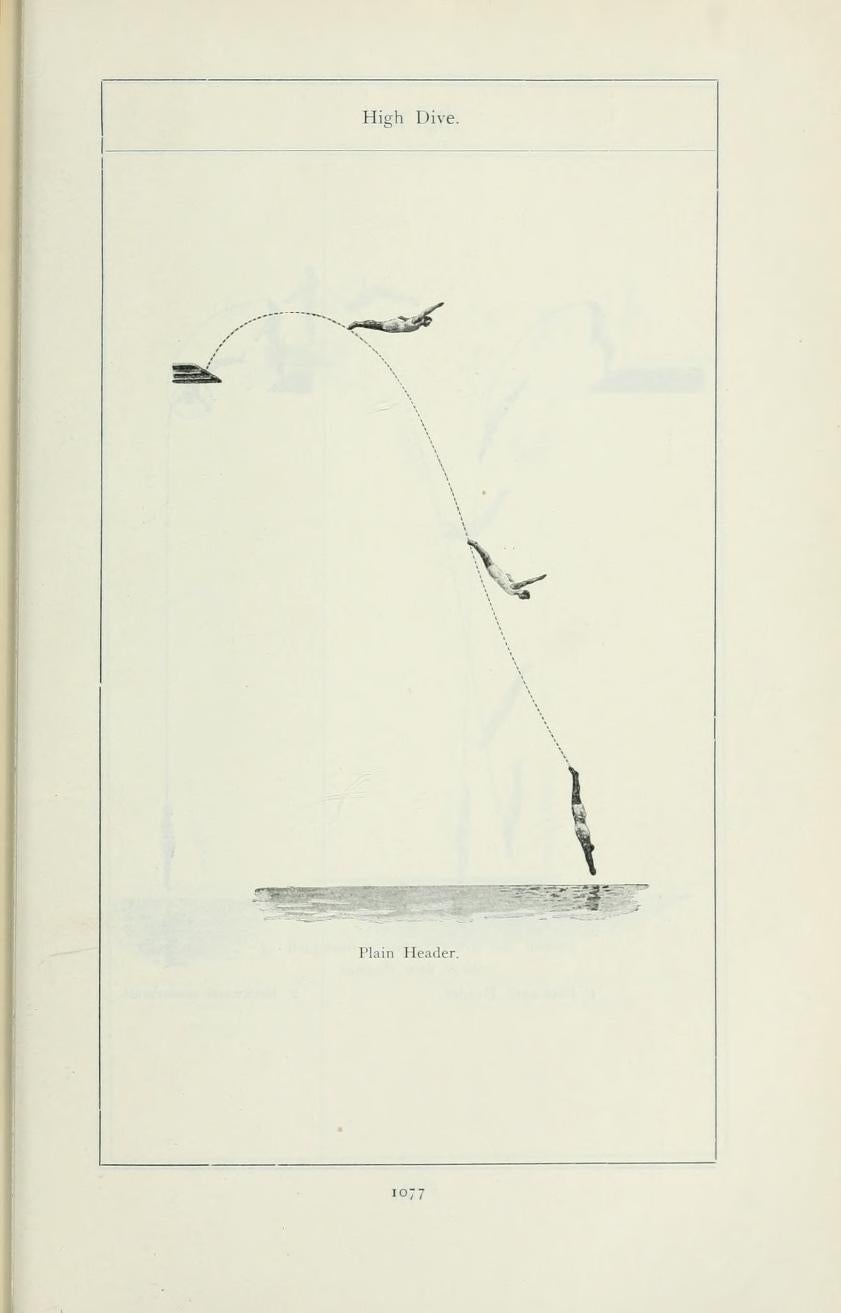
Internet Archive.
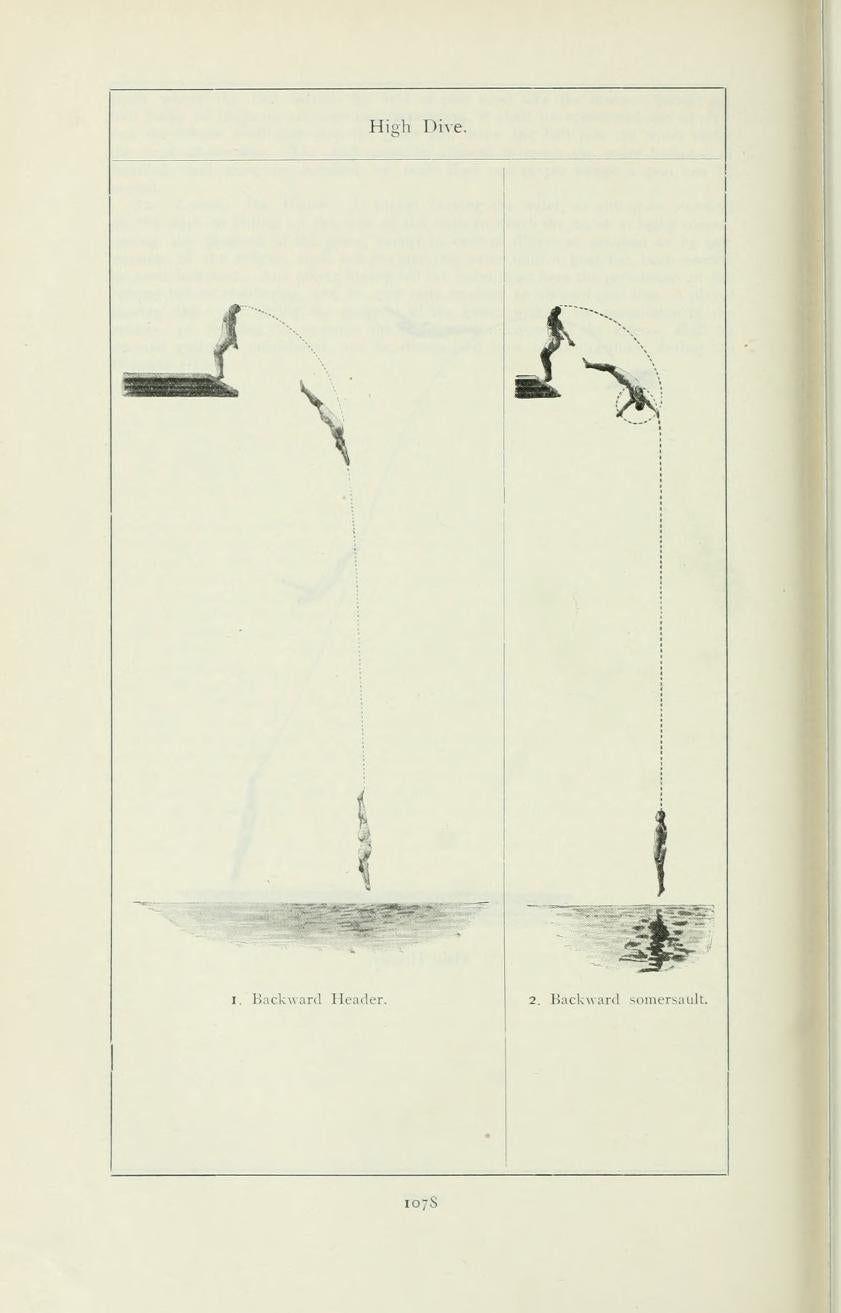
Internet Archive.

Internet Archive.
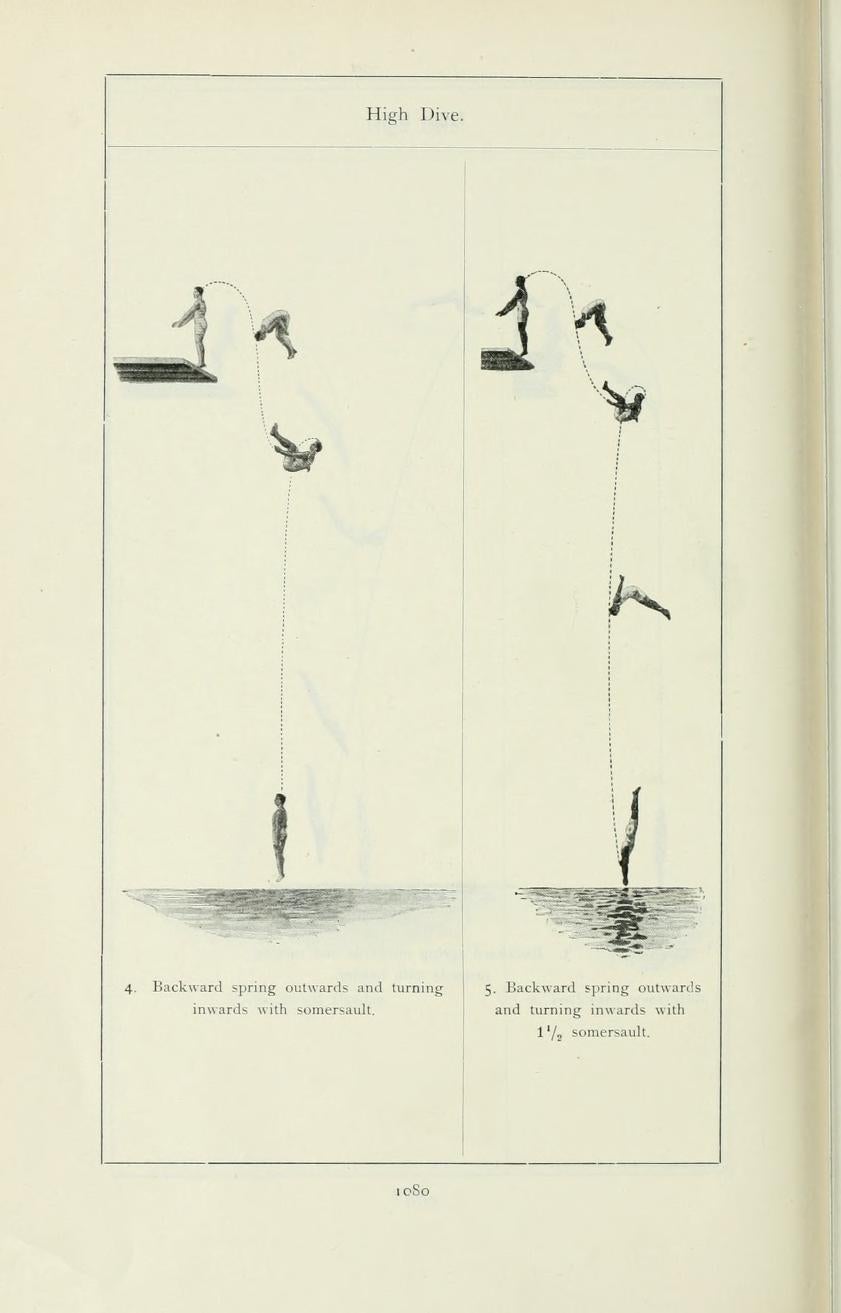
Internet Archive.
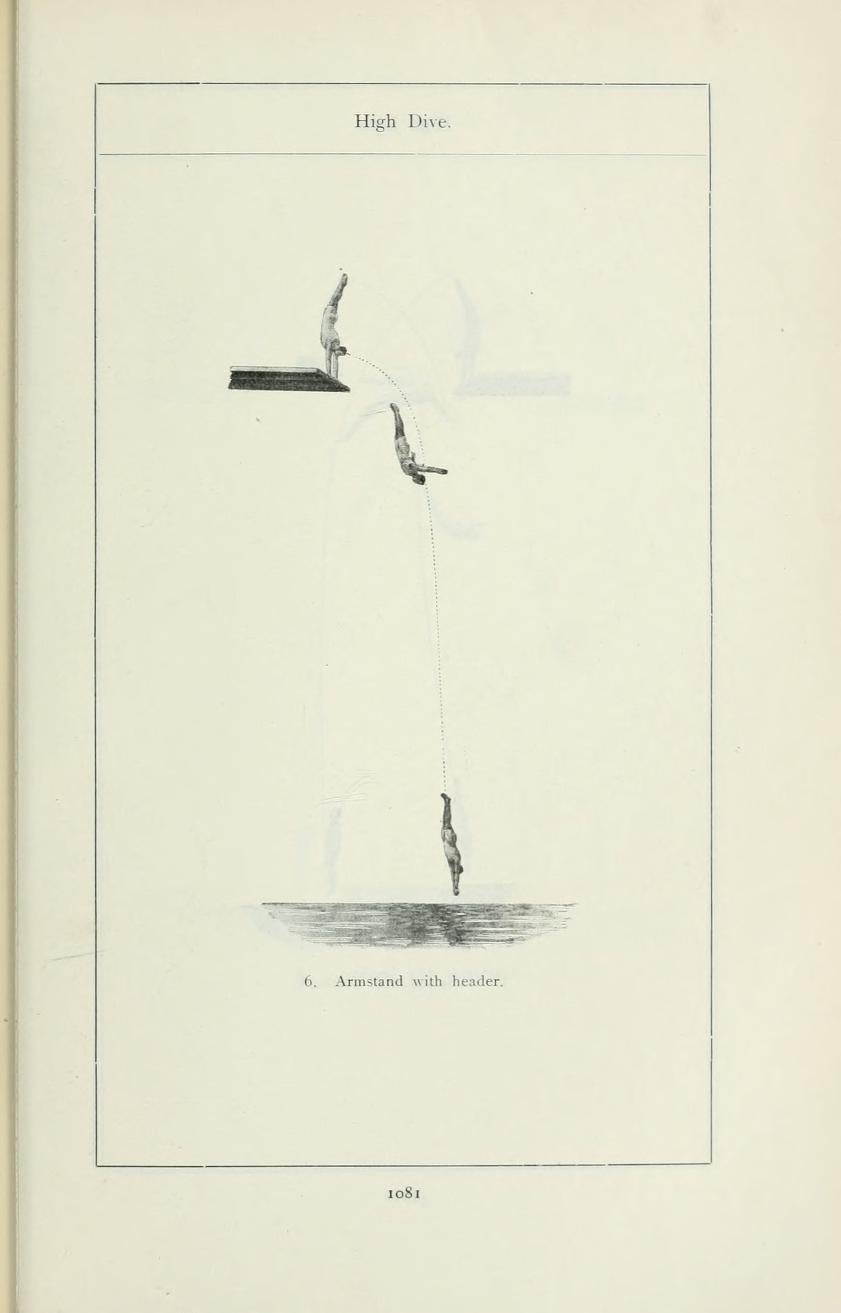
Internet Archive.
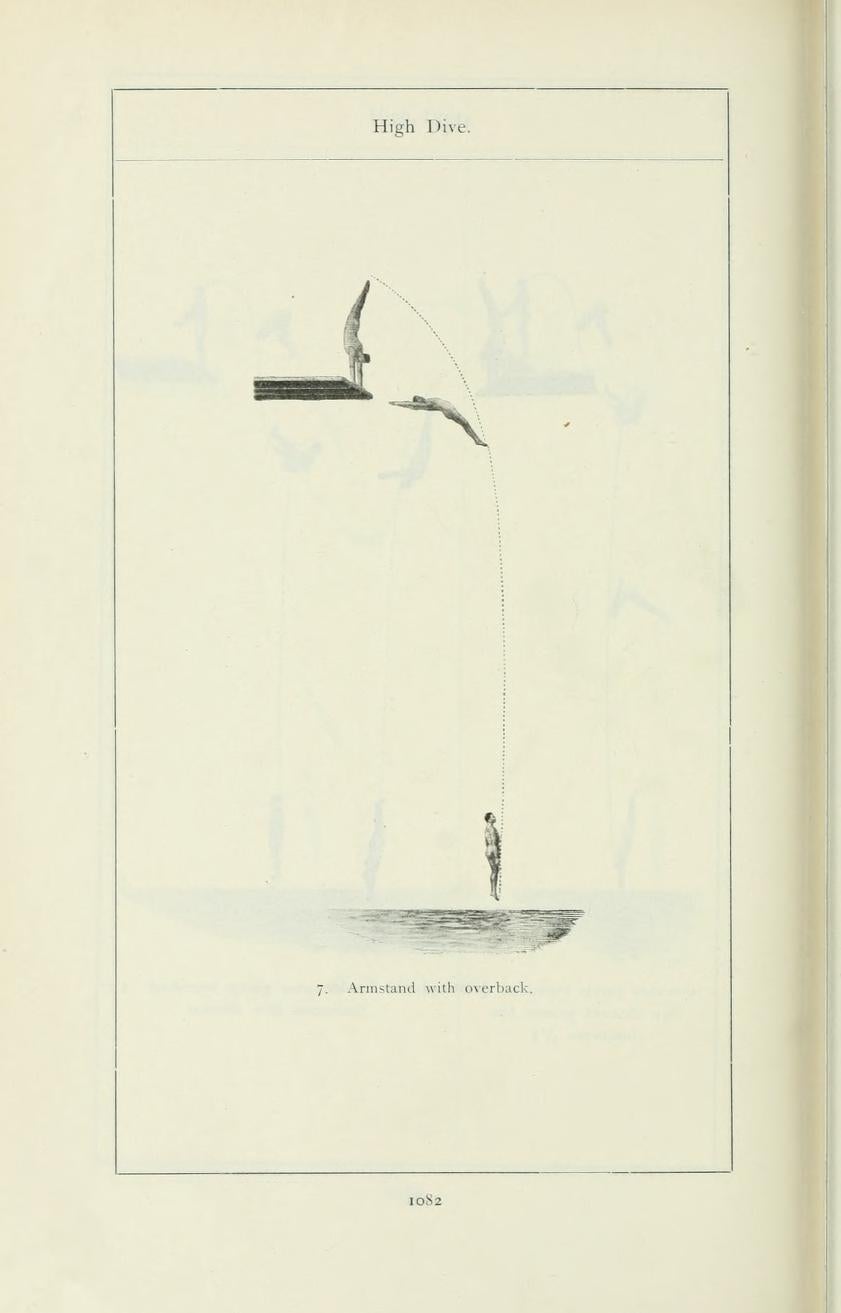
Internet Archive.

Internet Archive.

Internet Archive.

Internet Archive.
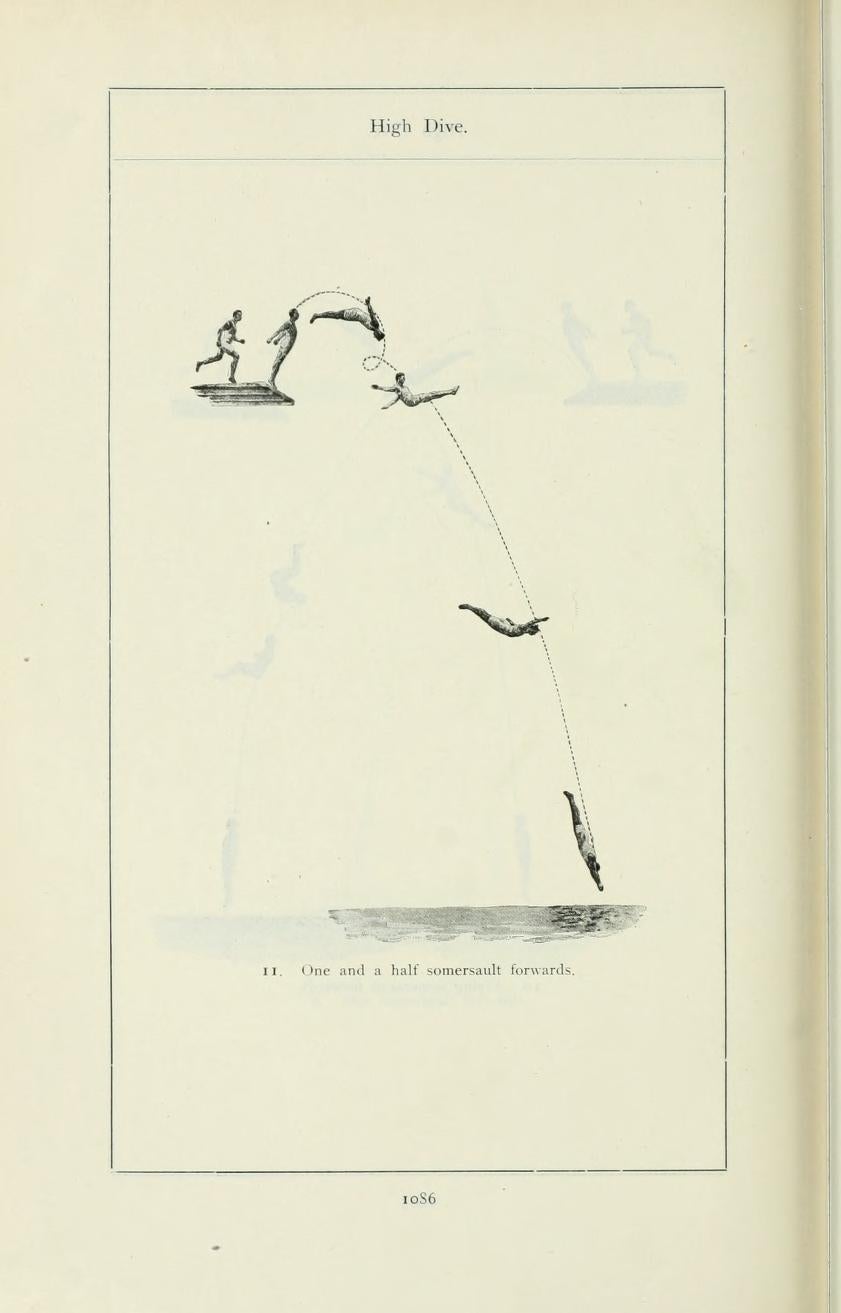
Internet Archive.
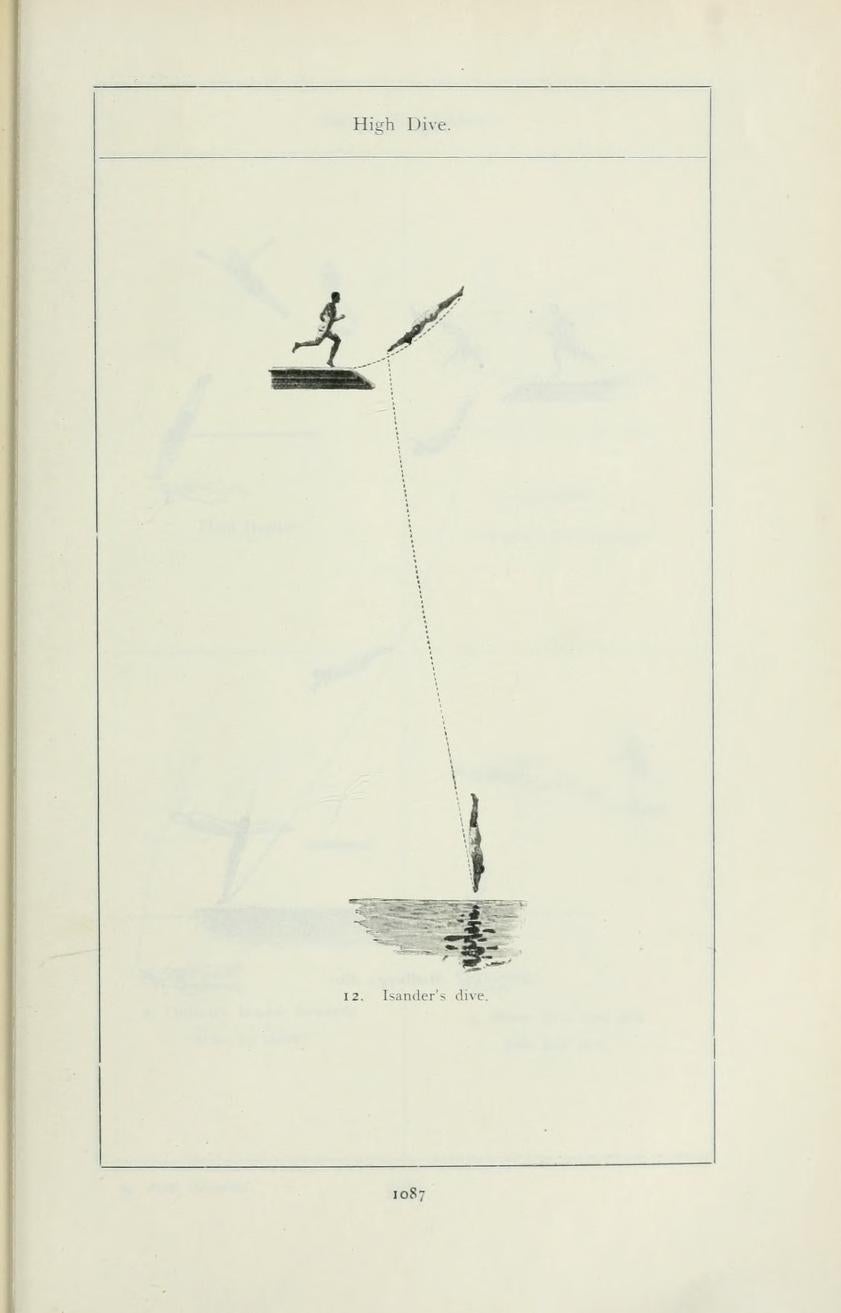
Internet Archive.
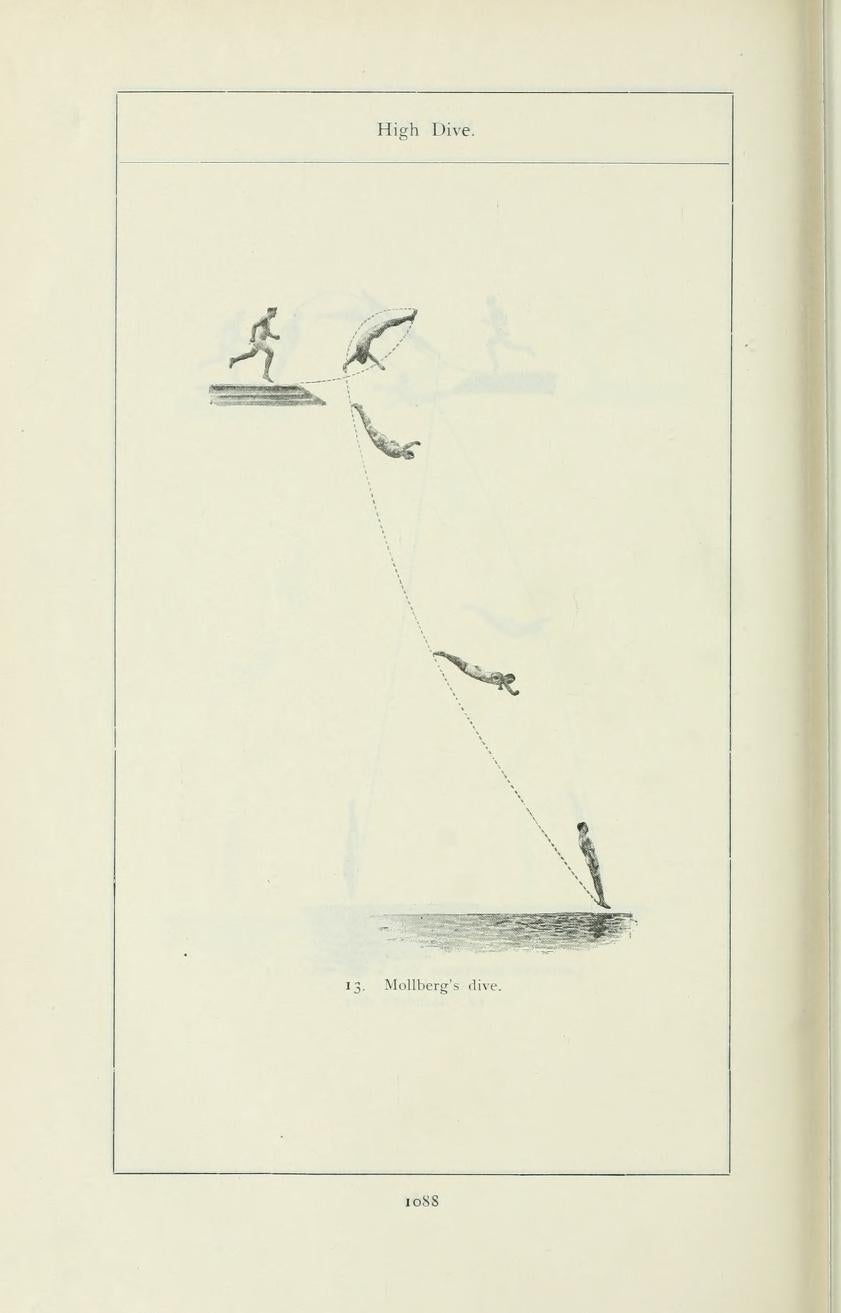
Internet Archive.